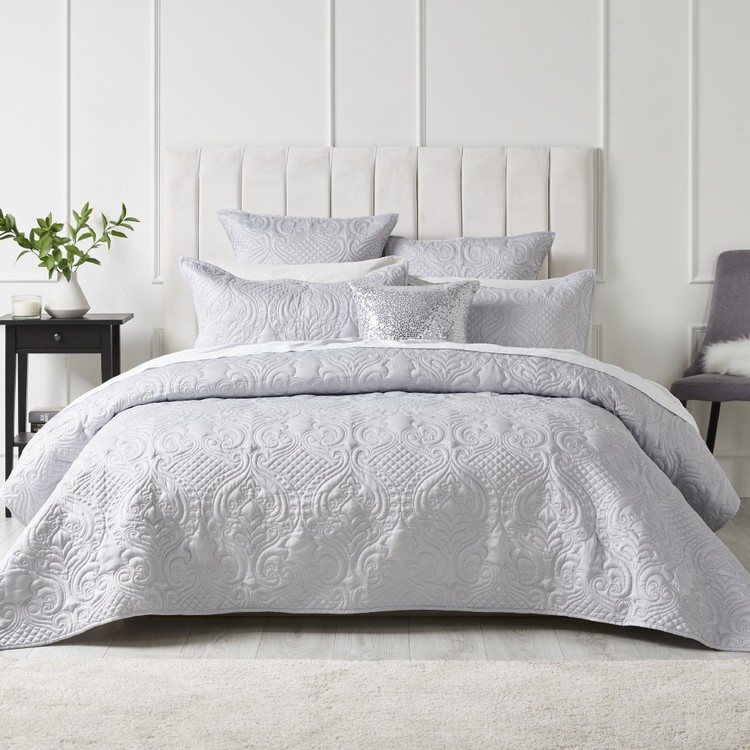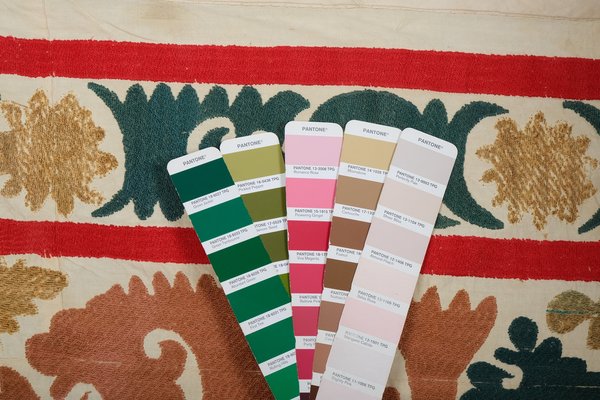Bed Spread and Fitted Sheets: Complete Your Bedroom with the Perfect Set
Bed Spread and Fitted Sheets: Complete Your Bedroom with the Perfect Set
Blog Article
The Ultimate Overview to Selecting the Ideal Bed Covering for Your Home
Selecting the suitable bed covering for your home is a nuanced process that needs cautious factor to consider of numerous crucial variables, including material, maintenance, dimension, and style. As we discover these measurements better, you may discover that the ideal bed covering is not simply an ornamental product, yet an important element of your living space.
Kinds Of Bedspreads

First of all, traditional bedspreads are identified by their all-inclusive style, normally covering the whole bed, consisting of the pillows. These are cushioned or often quilted, providing heat and a traditional look. In contrast, coverlets are lighter and commonly utilized in warmer climates, including an extra tailored appearance that falls simply to the sides of the mattress.
For a more casual vibe, duvet covers are prominent selections. They enclose a comforter and can be conveniently gotten rid of for cleaning, enabling adaptability in vogue. Comforters are thicker and generally loaded with synthetic fibers or down, making them an excellent choice for colder months.
Last but not least, tosses or bed coverings offer an ornamental component while offering added heat. They can be draped over the bed or utilized individually for a cozy touch. By taking into consideration these kinds, you can better align your option with your aesthetic choices and functional demands, ultimately boosting your bedroom's ambiance.
Material Factors To Consider
Choosing the right product for your bed cover plays a significant function in both comfort and toughness. The material you select can influence not only the aesthetic of your bedroom yet likewise just how well the blanket carries out with time. Common materials for bed coverings consist of cotton, silk, bed linen, and polyester, each offering unique benefits.
Cotton is a prominent selection because of its breathability, soft qualities, and simplicity of care. It is hypoallergenic, making it an exceptional alternative for those with level of sensitivities - table cloths. Polyester, on the other hand, is long lasting and immune to creases and fading, providing a low-maintenance choice
Linen, recognized for its natural texture and breathability, uses a glamorous feeling but may need more cautious maintenance to protect against wrinkling. Silk bed coverings, while classy and soft, can be less resilient and usually call for dry cleaning, making them matched for even more official settings.

Style and Style Alternatives
A broad selection of style and design alternatives is available for bedspreads, allowing homeowners to share their personal visual while improving the overall setting of the bedroom. From traditional patchworks to contemporary coverlets, bed coverings can be found in different designs that accommodate varied preferences and choices.
Standard styles frequently feature intricate patterns and abundant textures, making them ideal for vintage or rustic-themed insides. On the other hand, modern-day bed coverings often tend to accept minimalism with clean lines and strong shades, best for contemporary or Scandinavian-inspired rooms. For those seeking an eclectic appeal, bohemian designs existing vivid shades and mixed patterns, including a lively touch to any type of space.
Along with style, the option of layout aspects such as prints, needlework, and color palettes can significantly influence the ambience of the room. Floral motifs stimulate a sense of tranquility, while geometric patterns can develop a more energised and pop over to this web-site vibrant feel. Ultimately, choosing the ideal bed cover involves taking into consideration both visual preferences and the preferred mood for the space, guaranteeing that it complements existing decoration while providing comfort and aesthetic passion.
Size and Fit
The option of a bedspread expands beyond looks; dimension and fit are essential aspects that determine both performance and the overall look of the bedding set. table cloths. An uncomfortable bed covering can interfere with the visual harmony of a space and might lead to sensible difficulties, such as inadequate coverage or excessive bulk
To make sure the ideal size, begin by measuring your mattress dimensions-- width, size, and elevation. Criterion sizes consist of twin, complete, queen, and king, but variants exist. Think about the desired decline size, which describes how much the bedspread hangs over the sides of the mattress. A decline of 12 to 15 inches is common for a customized appearance, while a longer decrease can develop a more loosened up, luxurious appearance.
In addition, take into consideration any kind of additional bed linens elements, such as mattress toppers or decorative cushions, which may influence the total fit. When picking a bed cover, it is a good idea to choose styles that provide some versatility in sizing, such as oversized choices. This approach guarantees that the bed covering suits varying mattress elevations and designs, enhancing both comfort and aesthetic charm in your bed room.
Upkeep and Treatment
Correct upkeep and treatment are important for extending the life of continue reading this a bedspread and preserving its aesthetic appeal. Regular cleaning and attention to care instructions particular to the material are essential action in preserving its high quality. A lot of bed covers can be maker cleaned, however it is a good idea to examine the label for any unique needs.
To make certain durability, wash bedspreads in chilly water with a gentle cycle, using a light detergent. For delicate textiles like silk or certain synthetics, hand cleaning may be much more appropriate.
In addition, turning your bedspread regularly can reduce use on particular areas. If spills happen, address them quickly by blotting rather than scrubing, to avoid discolorations from setting. For bed coverings that need completely dry cleaning, comply with a routine to maintain freshness and cleanliness.
Final Thought
Selecting the excellent bed cover necessitates cautious factor to consider of different variables, including product, upkeep, style, and dimension requirements. The option of material, whether breathable cotton, durable polyester, or stylish silk, ought to straighten with individual way of life and environment demands. Additionally, the bed cover's layout must complement existing decoration while ensuring an appropriate suitable for the cushion. Focusing on maintenance and care will additionally boost the durability and visual allure of the bedspread, eventually contributing to a well-coordinated room setting.
Picking the suitable bed cover for your home is a nuanced procedure that needs careful consideration of numerous vital variables, consisting of material, design, upkeep, and size. The material you choose can affect not just the visual of your bedroom but likewise exactly how well the blanket performs over time. Common products for bed coverings include cotton, polyester, bed linen, and silk, each offering unique benefits.
Choosing the suitable bed covering demands mindful consideration visit here of different elements, including material, maintenance, design, and size demands. Prioritizing upkeep and treatment will further improve the longevity and visual appeal of the bed covering, inevitably contributing to a well-coordinated bed room environment.
Report this page